Influence of Calcination and Cation Exchange (APTES) of Bentonite-Modified Reinforced Basalt/Epoxy Multiscale Composites’ Mechanical and Wear Performance: A Comparative Study
Abstract
1. Introduction
2. Material and Methods
2.1. Materials
2.2. Silane Modification and Calcination of Bentonite
2.3. Fabrication of Multiscale Basalt Epoxy Composite
2.4. Analytical Techniques
2.5. Mechanical and Tribological Properties
3. Results and Discussion
3.1. XRD and FTIR
3.2. Specific Surface Area and Swell Index
3.3. Thermogravimetric Analysis
3.4. Tensile Strength and Analysis of Fracture Surface
3.5. Tribological Properties
4. Conclusions
- Thermal stability: The thermal degradation onset temperatures of the ARB-, CB-, and STB-reinforced composites increased only marginally, by less than 3 °C, with the CB and STB clays offering slight improvements in stability due to enhanced clay–epoxy interactions.
- Mechanical strength: The ultimate tensile strength (UTS) of the CB clay-reinforced composites increased by 48%, while STB composites showed a 21% increase compared to ARB composites. This was attributed to the better dispersion of the clays, increased surface area, and improved interfacial bonding between the clay, epoxy, and basalt fibers.
- Tribological properties: The wear volume decreased significantly, by 90% in CB composites and 84% in STB composites, due to the amorphous nature of calcined bentonite and the surface modification from the silane treatment. These changes reduced the hydrophilicity and enhanced the compatibility with the epoxy matrix, leading to better wear resistance.
Author Contributions
Funding
Institutional Review Board Statement
Informed Consent Statement
Data Availability Statement
Conflicts of Interest
Abbreviations
References
- Lopresto, V.; Leone, C.; De Iorio, I. Mechanical characterisation of basalt fibre reinforced plastic. Compos. Part B Eng. 2011, 42, 717–723. [Google Scholar] [CrossRef]
- Colombo, C.; Vergani, L.; Burman, M. Static and fatigue characterisation of new basalt fibre reinforced composites. Compos. Struct. 2012, 94, 1165–1174. [Google Scholar] [CrossRef]
- Liu, Q.; Shaw, M.T.; Parnas, R.S.; McDonnell, A.-M. Investigation of basalt fiber composite aging behavior for applications in transportation. Polym. Compos. 2006, 27, 475–483. [Google Scholar] [CrossRef]
- Khandelwal, S.; Rhee, K.Y. Recent advances in basalt-fiber-reinforced composites: Tailoring the fiber-matrix interface. Compos. Part B Eng. 2020, 192, 108011. [Google Scholar] [CrossRef]
- Ji, Q.L.; Zhang, M.Q.; Rong, M.Z.; Wetzel, B.; Friedrich, K. Friction and Wear of Epoxy Composites Containing Surface Modified SiC Nanoparticles. Tribol. Lett. 2005, 20, 115–123. [Google Scholar] [CrossRef]
- Kim, D.; Mittal, G.; Kim, M.; Kim, S.; Yop Rhee, K. Surface modification of MMT and its effect on fatigue and fracture behavior of basalt/epoxy based composites in a seawater environment. Appl. Surf. Sci. 2019, 473, 55–58. [Google Scholar] [CrossRef]
- Mittal, G.; Dhand, V.; Rhee, K.Y.; Park, S.J.; Kim, H.-J.; Jung, D.H. Investigation of seawater effects on the mechanical properties of untreated and treated MMT-based glass fiber/vinylester composites. Ocean Eng. 2015, 108, 393–401. [Google Scholar] [CrossRef]
- Ha, S.R.; Rhee, K.Y.; Kim, H.C.; Kim, J.T. Fracture performance of clay/epoxy nanocomposites with clay surface-modified using 3-aminopropyltriethoxysilane. Colloids Surf. A Physicochem. Eng. Asp. 2008, 313–314, 112–115. [Google Scholar] [CrossRef]
- ASTM D5890-02; Protocol: Standard Test Method for Swell Index of Clay Mineral Component of Geosynthetic Clay Liners. ASTM International: West Conshohocken, PA, USA, 2017.
- Khandelwal, S.; Rhee, K.Y. Effect of silane modified smectite clay on the hydration, intercalation of PCE superplasticizers, and mechanical strength of cement composites. Cem. Concr. Compos. 2021, 123, 104210. [Google Scholar] [CrossRef]
- ASTM D638-14; Protocol: Standard Test Method for Tensile Properties of Plastics. ASTM International: West Conshohocken, PA, USA, 2014.
- He, C.; Makovicky, E.; Osbæck, B. Thermal treatment and pozzolanic activity of Na- and Ca-montmorillonite. Appl. Clay Sci. 1996, 10, 351–368. [Google Scholar] [CrossRef]
- Huang, Z.; Wu, P.; Gong, B.; Dai, Y.; Chiang, P.C.; Lai, X.; Yu, G. Efficient Removal of Co2+ from Aqueous Solution by 3-Aminopropyltriethoxysilane Functionalized Montmorillonite with Enhanced Adsorption Capacity. PLoS ONE 2016, 11, e0164219. [Google Scholar] [CrossRef]
- Hayati-Ashtiani, M. Use of FTIR Spectroscopy in the Characterization of Natural and Treated Nanostructured Bentonites (Montmorillonites). Part. Sci. Technol. 2012, 30, 553–564. [Google Scholar] [CrossRef]
- Reddy, L.S. Spectroscopic Characterization of Bentonite. J. Lasers Opt. Photonics 2017, 4, 1000171. [Google Scholar] [CrossRef]
- Kaufhold, S.; Dohrmann, R.; Klinkenberg, M.; Siegesmund, S.; Ufer, K. N2-BET specific surface area of bentonites. J. Colloid Interface Sci. 2010, 349, 275–282. [Google Scholar] [CrossRef]
- Akinwunmi, B.; Sun, L.; Hirvi, J.T.; Kasa, S.; Pakkanen, T.A. Influence of temperature on the swelling pressure of bentonite clay. Chem. Phys. 2019, 516, 177–181. [Google Scholar] [CrossRef]
- Mittal, G.; Rhee, K.Y.; Park, S.J. Processing and characterization of PMMA/PI composites reinforced with surface functionalized hexagonal boron nitride. Appl. Surf. Sci. 2017, 415, 49–54. [Google Scholar] [CrossRef]
- Wang, D.; Li, X.; Wang, X.; Zhang, D.; Wang, D. Dynamic wear evolution and crack propagation behaviors of steel wires during fretting-fatigue. Tribol. Int. 2016, 101, 348–355. [Google Scholar] [CrossRef]
- Azeez, A.A.; Rhee, K.Y.; Park, S.J.; Hui, D. Epoxy clay nanocomposites–processing, properties and applications: A review. Compos. Part B Eng. 2013, 45, 308–320. [Google Scholar] [CrossRef]
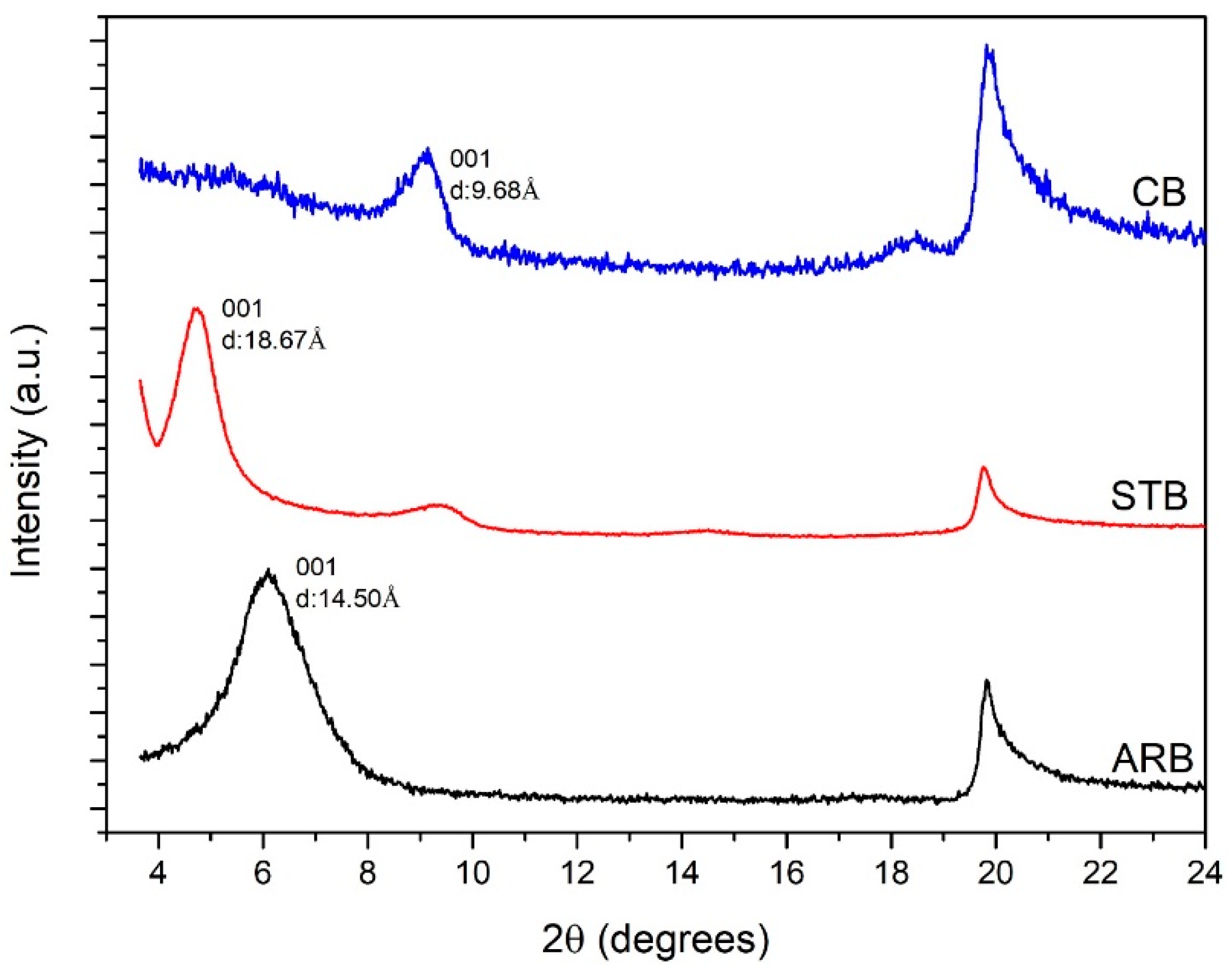
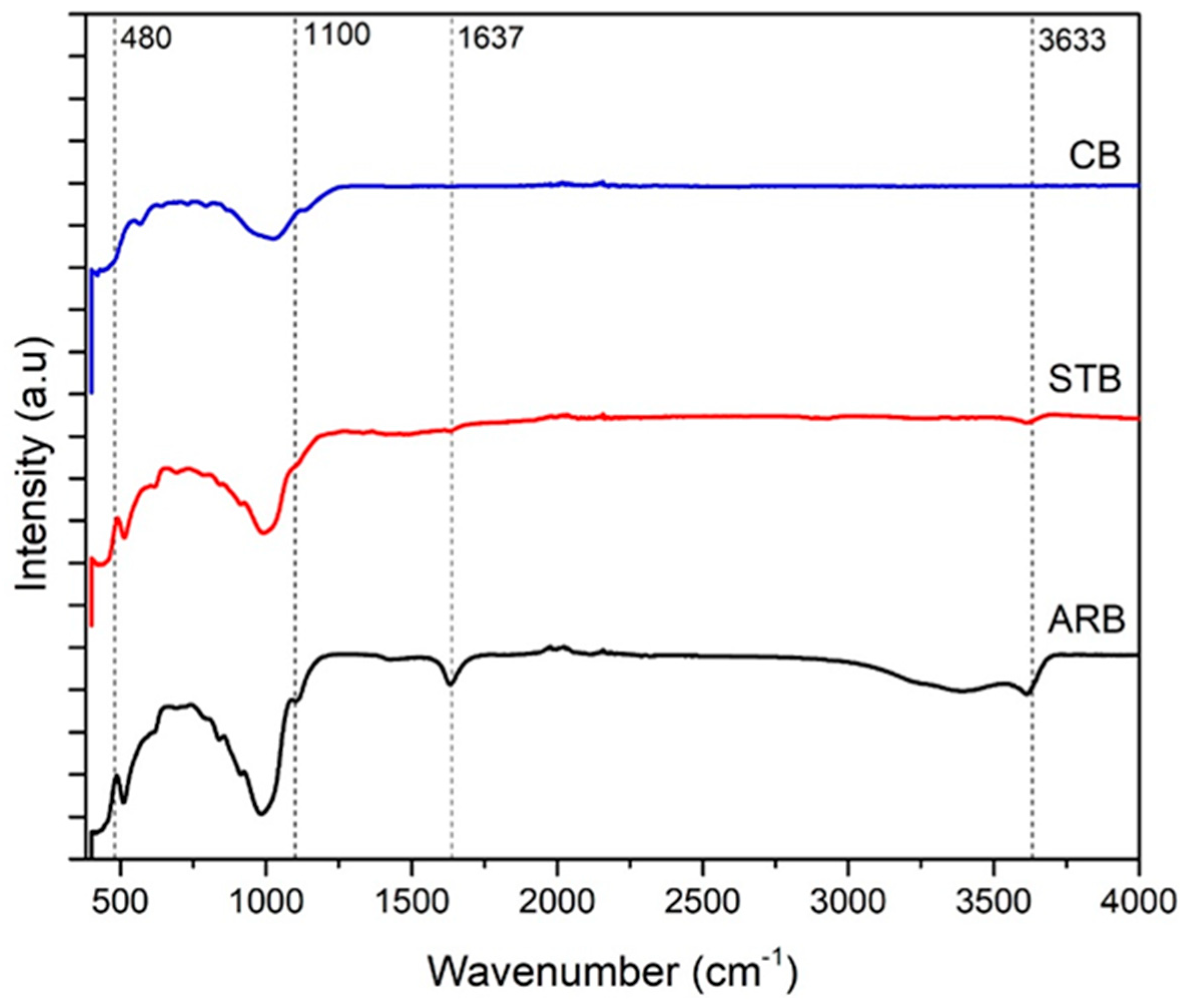

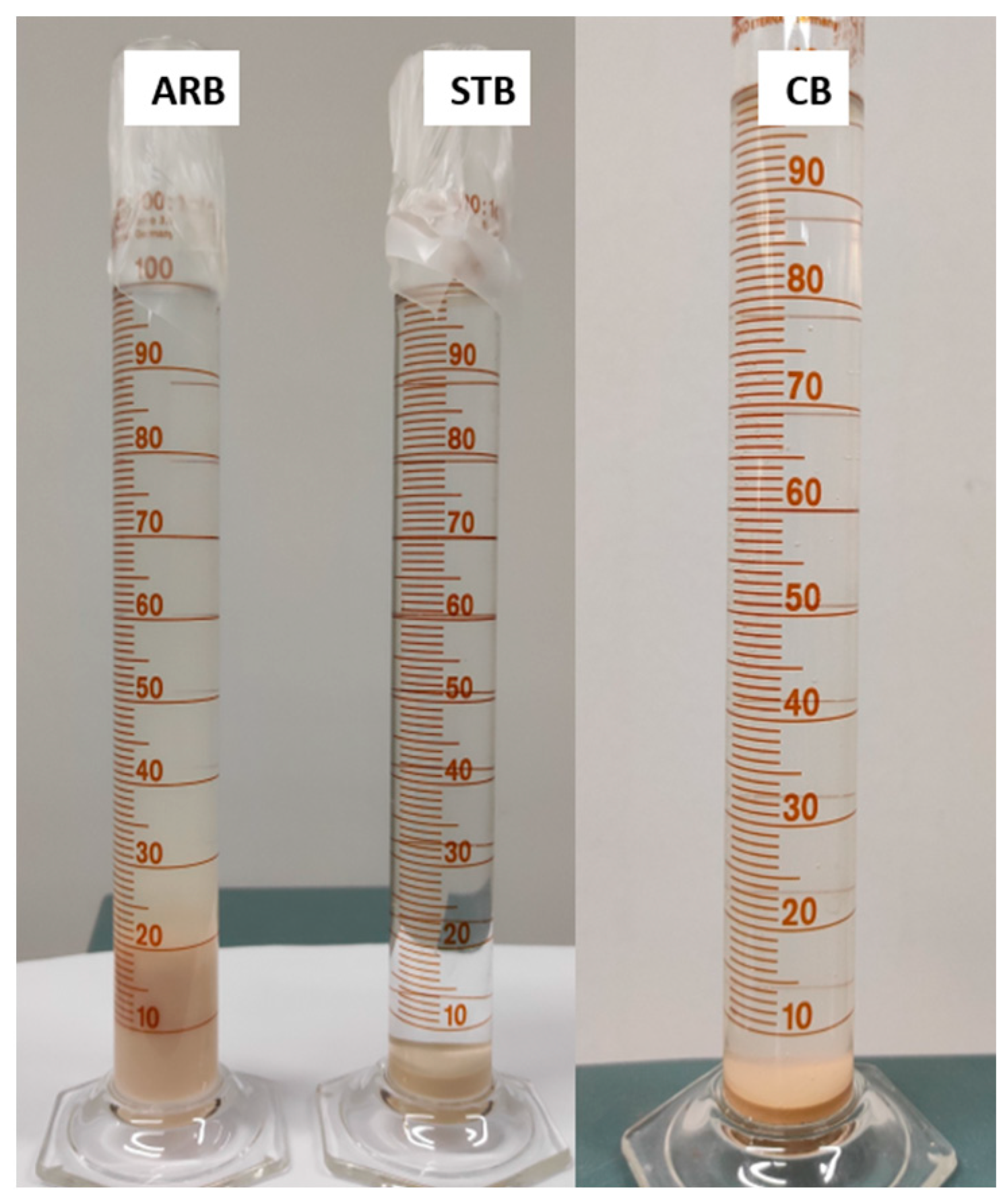
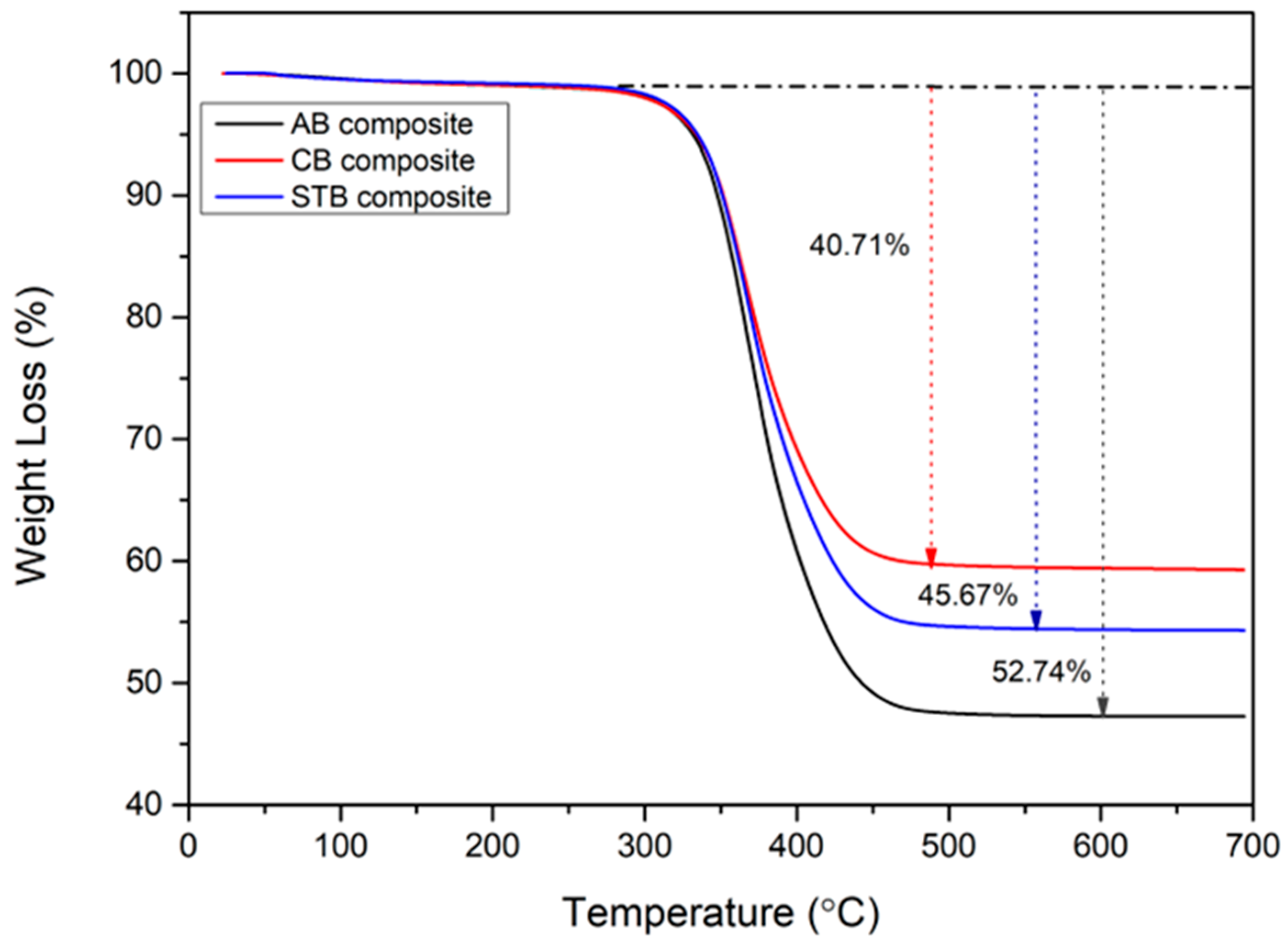
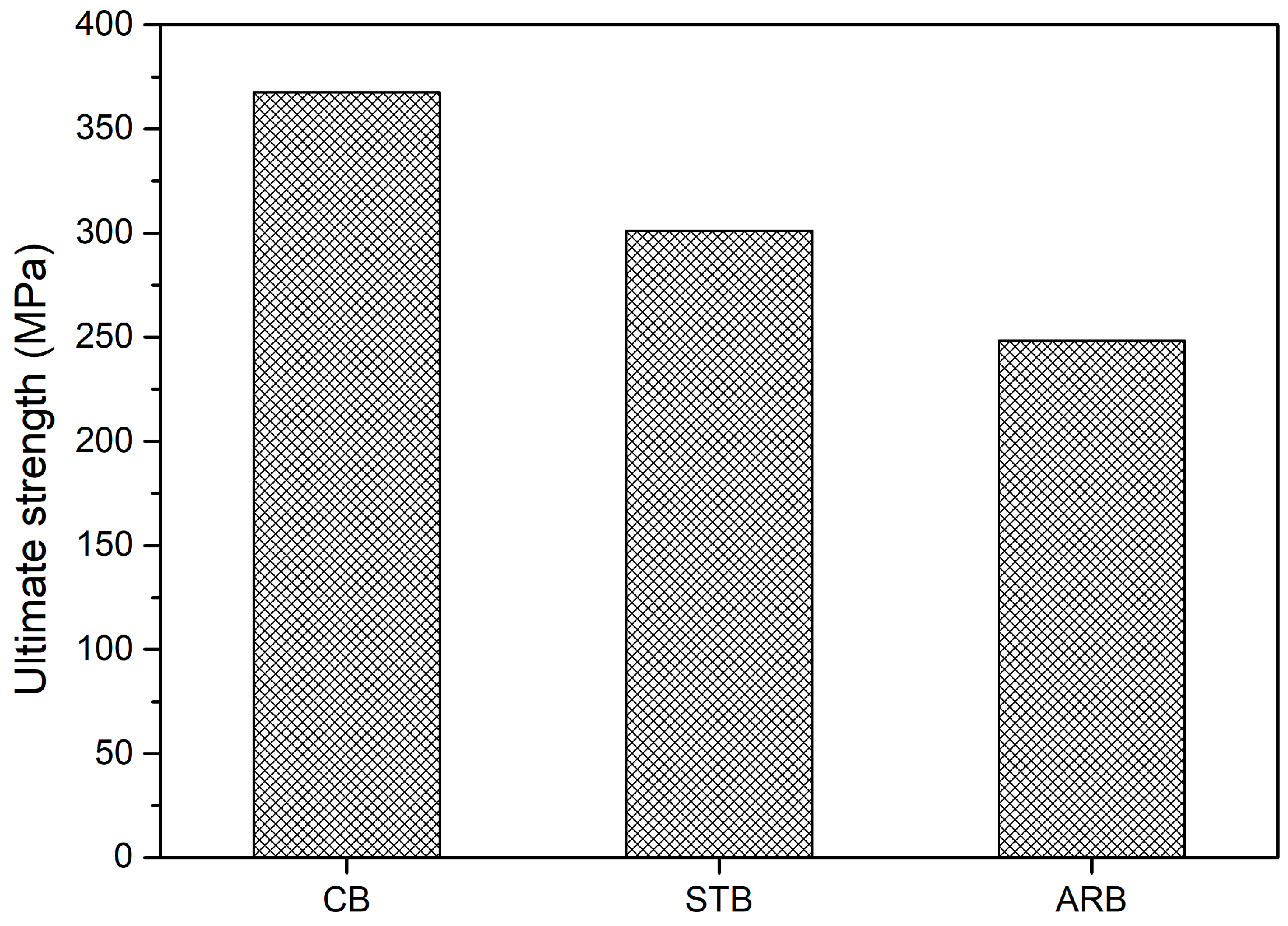


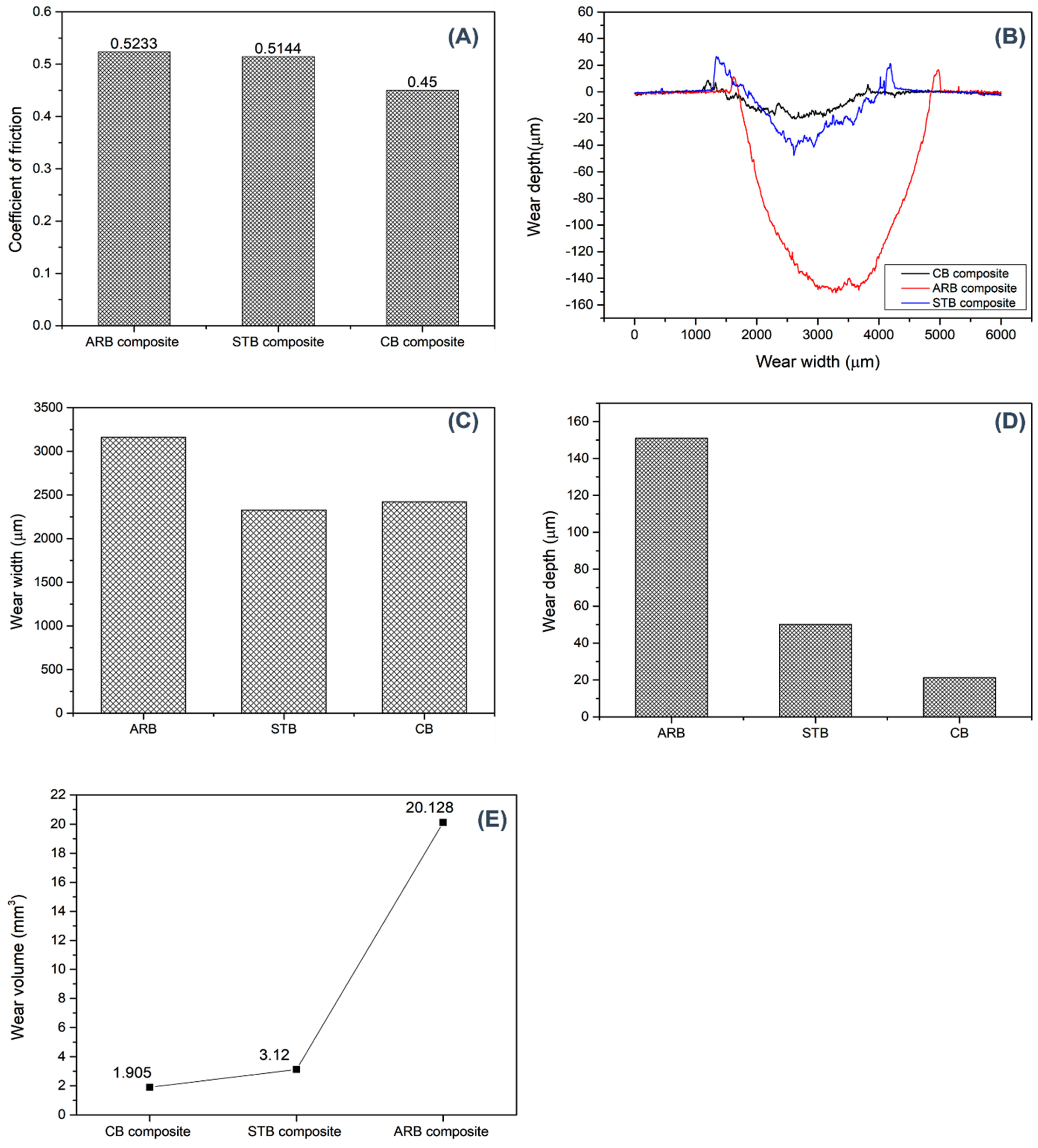
| CB Clay-Reinforced Composite | ARB Clay-Reinforced Composite | STB Clay-Reinforced Composite | |
|---|---|---|---|
| Wear Depth (mm) | 0.0214 | 0.151 | 0.05 |
| Wear Width (mm) | 2.421 | 3.161 | 2.325 |
| Wear Volume (mm3) | 1.9043 | 20.128 | 3.12 |
| Wear Rate (mm3/Nm) | 0.00008428 | 0.00087309 | 0.0001353 |
Disclaimer/Publisher’s Note: The statements, opinions and data contained in all publications are solely those of the individual author(s) and contributor(s) and not of MDPI and/or the editor(s). MDPI and/or the editor(s) disclaim responsibility for any injury to people or property resulting from any ideas, methods, instructions or products referred to in the content. |
© 2024 by the authors. Licensee MDPI, Basel, Switzerland. This article is an open access article distributed under the terms and conditions of the Creative Commons Attribution (CC BY) license (https://creativecommons.org/licenses/by/4.0/).
Share and Cite
Khandelwal, S.; Dhand, V.; Bae, J.; Kim, T.; Kim, S. Influence of Calcination and Cation Exchange (APTES) of Bentonite-Modified Reinforced Basalt/Epoxy Multiscale Composites’ Mechanical and Wear Performance: A Comparative Study. Materials 2024, 17, 4760. https://doi.org/10.3390/ma17194760
Khandelwal S, Dhand V, Bae J, Kim T, Kim S. Influence of Calcination and Cation Exchange (APTES) of Bentonite-Modified Reinforced Basalt/Epoxy Multiscale Composites’ Mechanical and Wear Performance: A Comparative Study. Materials. 2024; 17(19):4760. https://doi.org/10.3390/ma17194760
Chicago/Turabian StyleKhandelwal, Saurabh, Vivek Dhand, Jaehoon Bae, Taeho Kim, and Sanghoon Kim. 2024. "Influence of Calcination and Cation Exchange (APTES) of Bentonite-Modified Reinforced Basalt/Epoxy Multiscale Composites’ Mechanical and Wear Performance: A Comparative Study" Materials 17, no. 19: 4760. https://doi.org/10.3390/ma17194760
APA StyleKhandelwal, S., Dhand, V., Bae, J., Kim, T., & Kim, S. (2024). Influence of Calcination and Cation Exchange (APTES) of Bentonite-Modified Reinforced Basalt/Epoxy Multiscale Composites’ Mechanical and Wear Performance: A Comparative Study. Materials, 17(19), 4760. https://doi.org/10.3390/ma17194760







